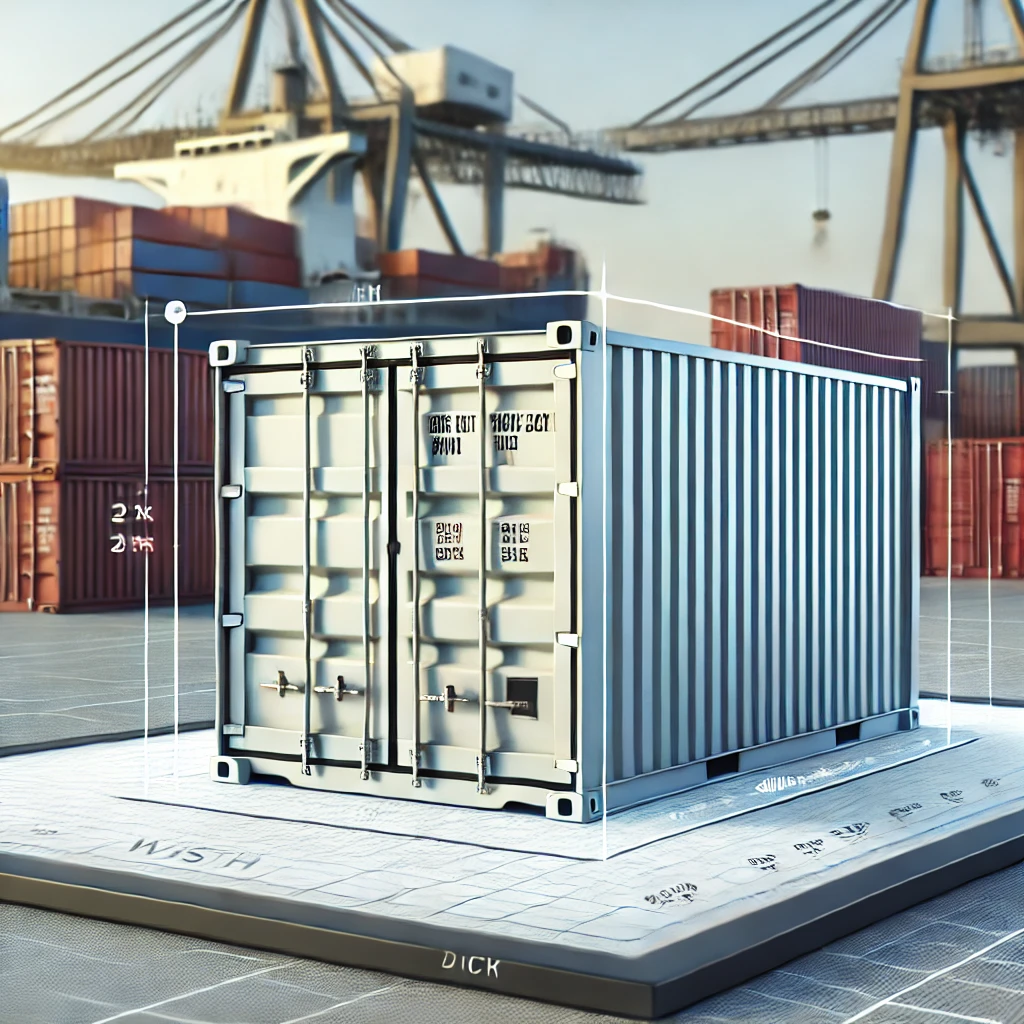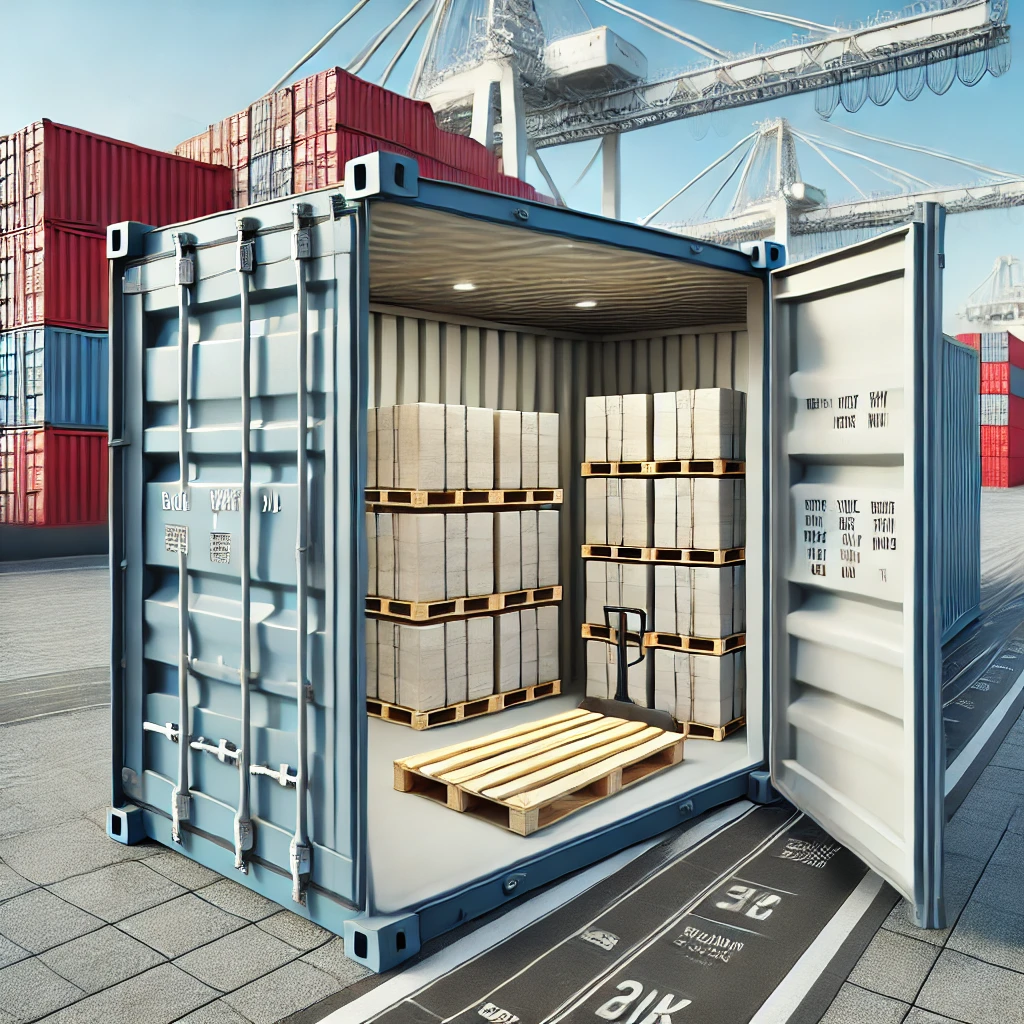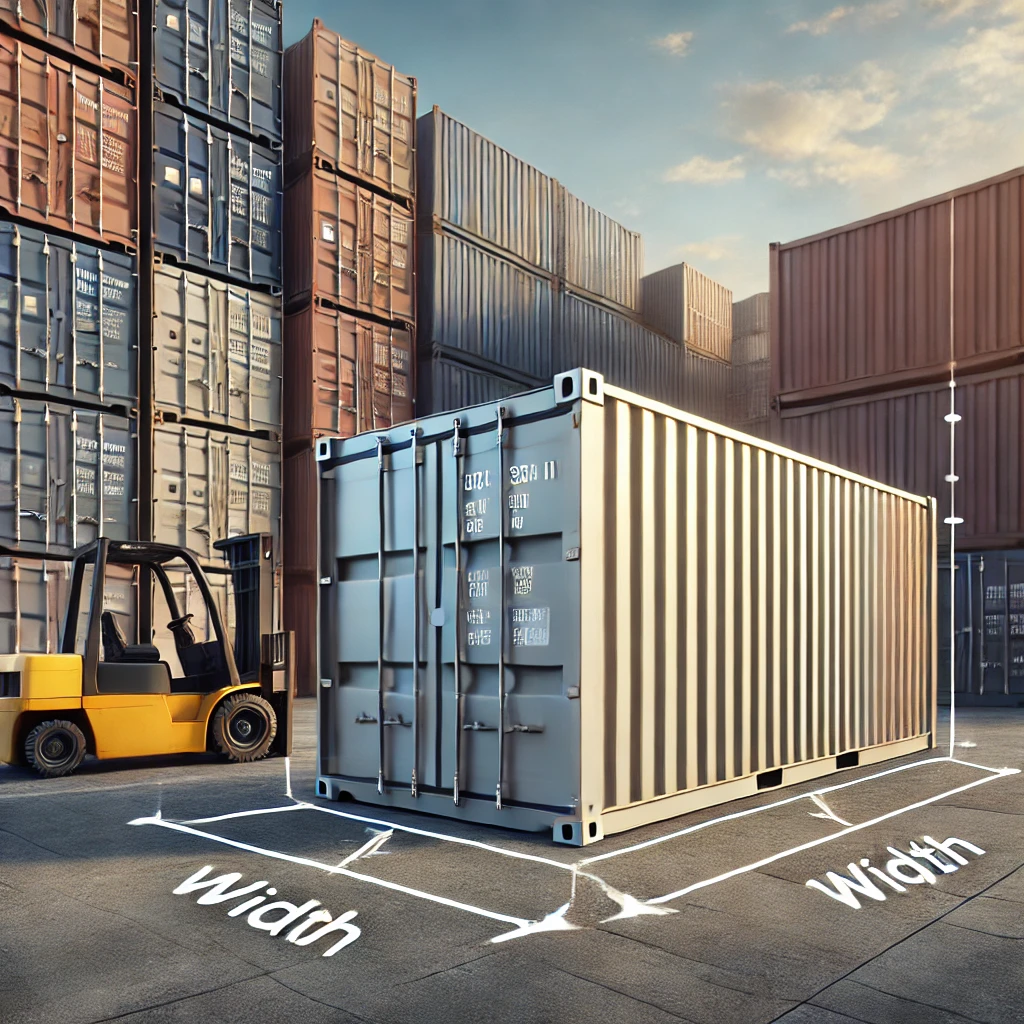Breaking Down How Wide Are Shipping Containers

📏 Standard Width of Shipping Containers
The International Organization for Standardization (ISO) sets shipping container dimensions to ensure global compatibility:
- Standard Width: 8 feet (2.44 meters). This is the global standard, designed for easy stacking and efficient transport.
- High Cube Containers: 8 feet wide, with an increased height (9.5 feet) for larger cargo, making them popular for voluminous shipments.
- Internal Width: Typically 7.7 feet (2.35 meters) due to wall thickness, which impacts the interior loading space.
🧩 Specialized Container Widths
Specialized containers accommodate specific cargo types:
- Pallet-Wide Containers: 8 feet 2 inches (2.50 meters), designed to carry more Euro pallets without wasted space. These are common in European logistics.
- Extra-Wide Containers: Custom-built containers wider than 8 feet, used for oversized cargo, modular structures, and large machinery.
- Flat Rack Containers: With collapsible sides, these containers are ideal for transporting wide and heavy loads.

💡 Why Container Width Matters
The width of a shipping container directly affects logistics efficiency and cost management:
- Efficient Cargo Loading: Proper width optimizes space utilization for pallets, crates, and bulk cargo.
- Transport Compatibility: Standard widths ensure containers fit securely on ships, trains, and trucks.
- Cost Savings: Maximizing cargo per container reduces transportation costs and boosts profitability.
- Warehouse Management: Consistent sizes simplify storage and stacking in distribution centers.
🛠️ Practical Uses for Different Widths
- Standard Containers: Ideal for general goods, including textiles, furniture, and electronics.
- Pallet-Wide Containers: Common in European markets, these containers carry more pallets, reducing transportation costs.
- Extra-Wide Containers: Suitable for oversized industrial equipment, construction materials, or modular housing units.
- Flat Rack Containers: Perfect for transporting large machinery, boats, or vehicles that exceed standard dimensions.

🚛 How Container Width Impacts Logistics
Container width plays a key role in efficient transport across different modes:
- Truck Transport: Standard widths fit securely on trailers and flatbeds, ensuring safe transit.
- Rail Transport: Uniform widths enable easy stacking on railcars, reducing handling times during intermodal transport.
- Maritime Transport: Consistent sizes maximize ship loading capacity, increasing efficiency on container vessels.
- Warehouse Operations: Standardized widths simplify inventory management and storage stacking.
⚠️ Shipping Container Width and Safety Considerations
Safety is paramount when dealing with containerized cargo:
- Weight Distribution: Properly loading cargo within the container prevents tipping and shifting during transit.
- Regulatory Compliance: Understanding and adhering to transport regulations regarding container widths avoids fines and delays.
- Cargo Securing: Using dunnage, lashing straps, and braces prevents damage to goods during shipping.
- Overweight Risks: Wider containers can carry more cargo but must comply with weight limits for transport safety.

🚀 Future Trends in Shipping Container Design
The container shipping industry is evolving with new technologies and sustainable designs:
- Smart Containers: IoT-enabled containers with GPS, temperature sensors, and real-time tracking.
- Eco-Friendly Containers: Built from recycled materials with energy-efficient insulation.
- Foldable Containers: Innovative designs that collapse when empty, reducing return shipping costs.
- Modular Containers: Adaptable units repurposed for housing, offices, or pop-up retail spaces.
- 3D-Printed Containers: Using advanced manufacturing techniques for faster, cost-effective container production.
📝 Conclusion
Understanding the width of shipping containers is essential for efficient logistics operations. From standard to specialized containers, width impacts loading capacity, transport compatibility, and storage efficiency. Businesses that understand these dimensions can make smarter choices, reduce costs, and optimize their supply chains. As technology and sustainability trends reshape container design, staying informed about new innovations will help businesses remain competitive in global trade. 🚢📦🌎
